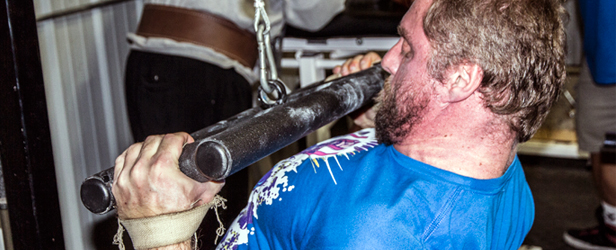
On to everybody’s favorite part: the meat and potatoes, the main reason you stuck around this long and read parts one and two—the practical applications!
The one, solid conclusion that we can draw from the two scientific definitions of fitness, along with all the theoretical and practical insight given from the coaches and trainers, is that fitness is very specific and dependent on the individual. Powerlifters compare to powerlifters, Olympic weightlifters compare to Olympic weightlifters, marathon runners compete against marathon runners, and our construction worker wants to outperform his colleagues so that he gets paid more!
Every individual—Mel Siff, Yuri Verkhoshansky, Mark McLaughlin, Patrick Ward, Sam Leahey, Anthony Mychal, and Joel Jamieson—agrees that you must tailor your training to your specific task. (Whether it be a sport or everyday life, you will always have something that you must be “fit” for!) Powerlifters focus on their three competition lifts, Olympic lifters never go too far from the clean and jerk and the snatch, and marathon runners will always focus on long distance running.
Where it gets tricky is for those who don't compete in any type of sport or understand what the best way to be fit for your job and everyday life is. So the real questions are…
What do you need to be fit for? What’s going to make you better? Do you need to be able to chase your kids around at the park after school? Play catch or shoot hoops with your son or daughter? Reduce your risk of injury at work from carrying and loading heavy stuff all day? Better your postural strength to combat sitting at a desk all day? Or do you have aspirations to be leaner, faster, stronger, and endure the rigors of everyday life?
Once you've figured this out for yourself, you’ll understand where and what direction you need to take your training. After you've taken the time to outline your needs and goals, your best bet is to contact a coach (the easiest way would be to contact one via the Q&A section of elitefts™) or trainer. Tell him what you do (your task), what you want to get better at, and then explain why. You'll be well on your way to your best level of fitness ever!
But if you’re a go-getter, do-it-yourself type of guy or gal, (which if you’re reading elitefts™, I'll bet you are), you could go a different route by doing something below:
- Try a combination of the PLP (by Chad Waterbury) and 40-Day (by Dan John) programs that Anthony Mychal used for several months after he broke his foot to help cure his “skinny fatness.”
- Use an HRV tool such as the BioForce or OmegaWave Smartphone app to help you program your training on a daily basis.
- Start performing some conditioning work such as Prowler® pushes, sled dragging, sprinting, weighted carries, or any of the endless variations that you can think of.
- Add in a circuit of mobility and injury prevention exercises at the beginning or end of your session.
- Try some different medicine ball throw exercises in either an extensive or intensive fashion.
Remember, the fitness world can get very muddy and cluttered. Everybody wants you to do what they preach. To paraphrase Jim Wendler, “You don’t owe anybody anything.” Use this as a guide with your training. Do what is best for you and what is going to make you the most fit for what you do and for what you want!
References
- Marathon world record progression. (2013). Retrieved: January 11, 2013. From: Wikipedia: http://en.m.wikipedia.org/wiki/Marathon_world_record_progression.
- Siff M (2003) Facts and Fallacies of Fitness. 6th Edition. Denver: Perform Better.
- Verkhoshansky Y (2009) Supertraining. 6th edition (expanded). Rome: Ultimate Athlete Concepts, USA.









